Key takeaways:
- Religious education promotes understanding and tolerance by exploring diverse beliefs and values, fostering respect among individuals.
- Interfaith dialogue encourages empathy and critical thinking, revealing common struggles and nurturing community connections.
- Diverse religious perspectives enrich personal experiences, creativity, and resilience, highlighting shared human values across different faiths.
- Navigating an interfaith upbringing can lead to personal growth through challenges, teaching the importance of vulnerability and openness in building connections.
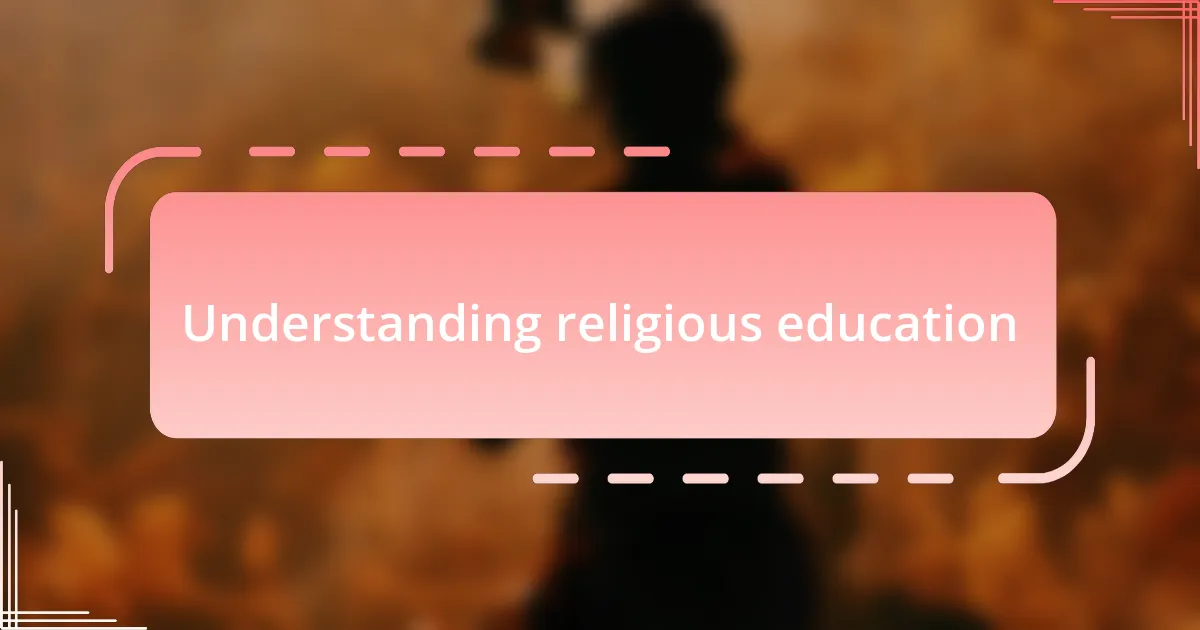
Understanding religious education
Religious education can be a powerful tool for fostering understanding and tolerance among diverse beliefs. I remember attending community gatherings where different faiths came together to share their traditions and stories. Those experiences opened my eyes to the richness of various practices, making me wonder how many others miss out on such enlightening connections.
When I reflect on religious education, I often think about the role it plays in shaping values and ethics. How do we instill a sense of respect for others if we don’t explore their beliefs? In my experience, learning about different religions not only clarified my own beliefs but also highlighted the similarities we share, like the pursuit of compassion and justice.
I’ve seen firsthand how inclusive religious education can spark curiosity in young minds. Kids often ask surprising questions, such as why certain rituals are celebrated or what different symbols mean. Those moments of inquiry remind me of the importance of creating a safe space for discussion, where questions can lead to deeper understanding rather than conflict.
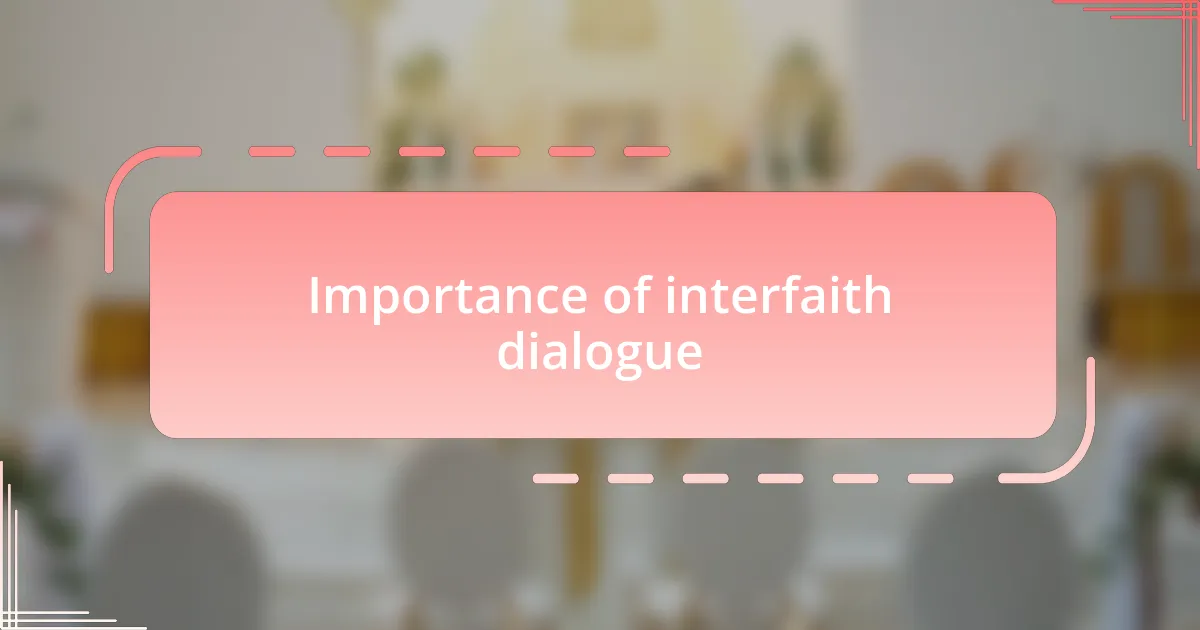
Importance of interfaith dialogue
Interfaith dialogue serves as a bridge between different cultures and beliefs, allowing individuals to communicate and understand one another on a deeper level. I remember a time during a school project where my classmates from various religious backgrounds came together to create a presentation about our traditions. This collaboration not only enriched our knowledge but also fostered friendships that helped us see beyond our differences.
Engaging in conversations about faith can be transformative. I often think about how discussing belief systems opens doors to empathy and compassion. When my friend from a different religion shared her stories and struggles, it made me realize that the challenges we face are often more similar than we think. This common ground nurtures a sense of community and shared responsibility in addressing broader societal issues.
Moreover, interfaith dialogue encourages critical thinking and curiosity. I often reflect on the moments when we would challenge each other’s perspectives; those discussions filled my heart with excitement and occasionally discomfort, as they pushed me to reassess my views. Isn’t it fascinating how the discomfort of questioning can lead to profound personal growth? By inviting diverse voices into our conversations, we pave the way for a more inclusive society, where every belief is heard and valued.
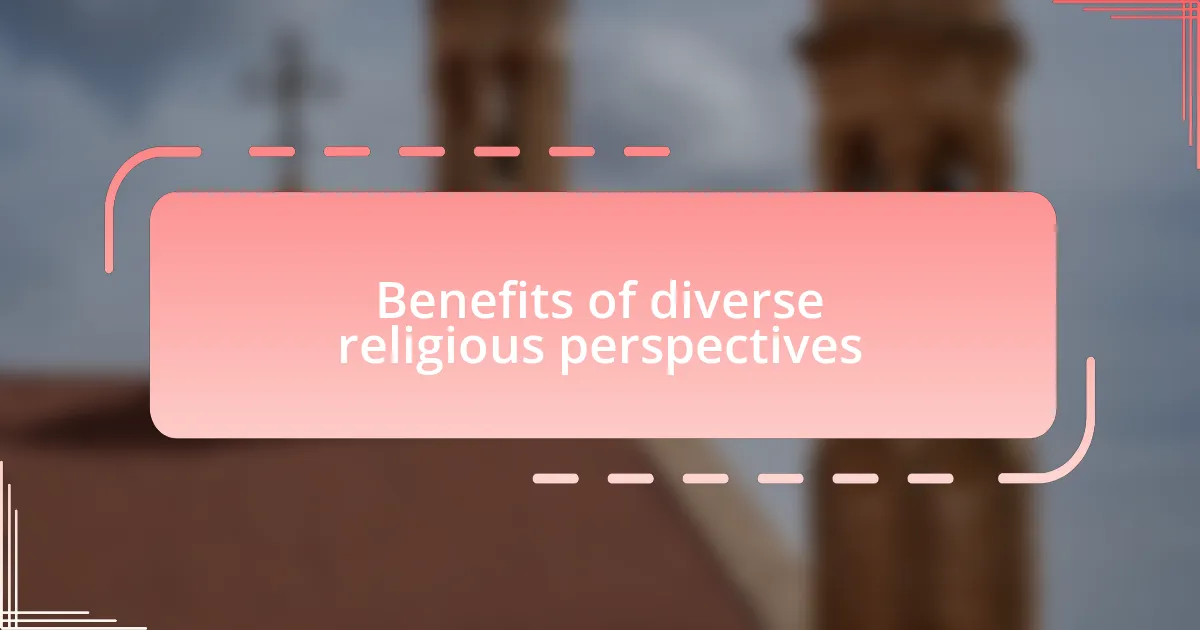
Benefits of diverse religious perspectives
Diverse religious perspectives offer a unique window into various worldviews, enriching our understanding of human experiences. I recall a field trip to a local mosque with classmates from different faiths. As we listened to the speaker explain the principles of Islam, I was struck by how these teachings on kindness and charity echoed similar values in my own tradition. It led me to think: how often do we overlook the common threads that bind us, simply because we approach belief from different angles?
The exchange of ideas across faiths also fosters innovation and creativity. I remember collaborating with a friend whose family practices Buddhism on a community art project. The contrasting yet complementary ideas we shared, like mindfulness and gratitude, helped us craft something that not only reflected our individual beliefs but also presented a mosaic of hope for our community. Isn’t it inspiring to think about how diverse viewpoints can spark new ideas that benefit everyone?
Additionally, embracing diverse religious perspectives can cultivate resilience. Sharing stories of overcoming adversity from different religious lenses showed my peers and me how we can learn from each other’s struggles. I often feel empowered when I hear how different communities persevere; it reminds me that we are not alone in our challenges. How can we better harness these narratives for the collective good? By valuing and integrating these differing perspectives, we create a robust foundation for compassion and understanding in our increasingly interconnected world.
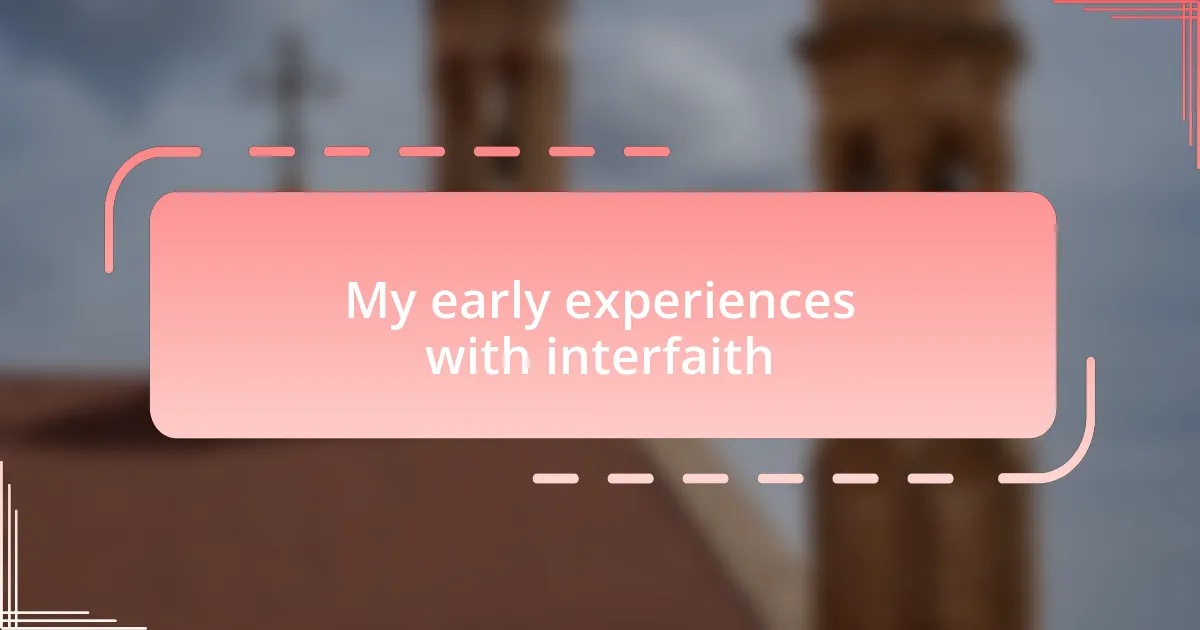
My early experiences with interfaith
Thinking back on my early experiences with interfaith interactions, I remember the warmth of my neighbor’s Diwali celebration. Invited in for sweets and lights, I felt welcomed, despite our different beliefs. I still marvel at how joy transcended our religious boundaries, reminding me that community can be built around shared humanity rather than doctrines.
Another vivid memory is attending a summer camp where kids from various faiths would share stories of their traditions. There was something captivating about hearing the story of the Passover Seder, told by a Jewish friend, which deepened my appreciation for his faith. I often ask myself, how many such moments can we create when we allow curiosity about each other’s beliefs to flourish?
One particular encounter stands out. In high school, I engaged in a discussion about compassion with a classmate who identified as a Sikh. His perspective on selfless service profoundly resonated with me, prompting a reflective question: what if we all practiced kindness as our fundamental principle? That formative conversation shaped my understanding of empathy across cultures, igniting a lifelong passion for exploring interfaith dialogue.
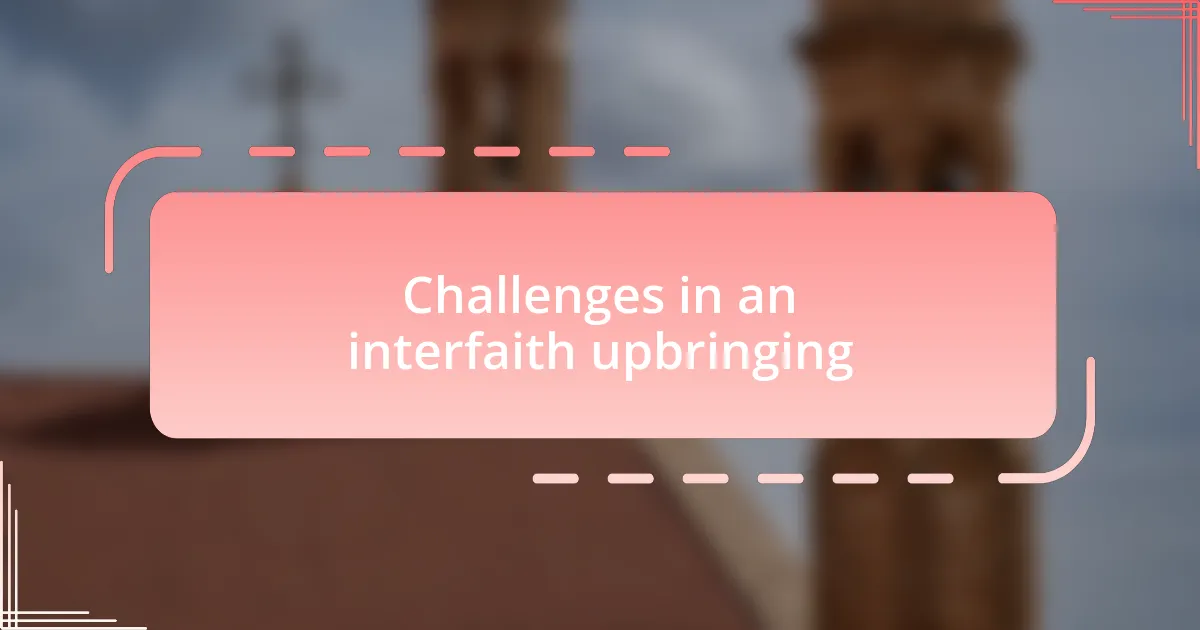
Challenges in an interfaith upbringing
Navigating an interfaith upbringing often comes with its unique set of challenges. I remember feeling caught between my parents’ differing traditions during important holidays. It was confusing to decide where to celebrate and how to honor both faiths without alienating either side. I often wondered, how can one person fully belong to two worlds?
One particularly difficult moment occurred during a family gathering when an unexpected debate erupted over differing beliefs. I found myself standing in the middle, trying to reconcile their perspectives while longing for harmony. This experience taught me the importance of understanding and patience, but it also made me question: is it realistic to expect complete acceptance from everyone involved?
Another challenge was grappling with my identity as a child of two faiths. At times, I felt the pressure to choose one side over the other, which left me feeling fragmented. I often asked myself how I could embrace both traditions without losing a sense of self. This internal struggle ultimately prompted me to seek out community groups focused on interfaith dialogue, leading to a richer understanding of my heritage.
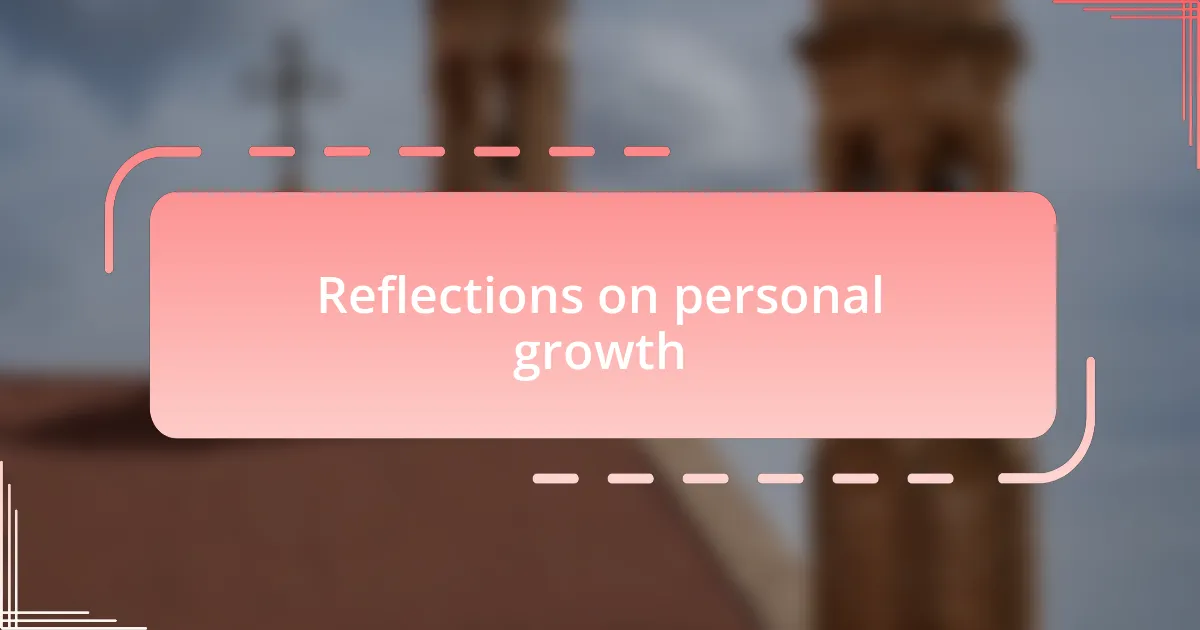
Reflections on personal growth
As I navigated the complexities of my interfaith childhood, I found that these challenges became catalysts for my personal growth. I vividly recall a moment when I attended a religious ceremony from my mother’s tradition, surrounded by family and community. The warmth and connection I felt that day reminded me of the power of shared beliefs, and it opened my eyes to how embracing both faiths could enrich my identity rather than fragment it.
Reflecting on these experiences, I learned that resilience stems from vulnerability. There were times when I felt immense pressure to defend my upbringing in conversations with peers. However, each time I openly shared my journey, I found common ground and a surprising sense of support from those who also faced identity struggles. This taught me that personal growth often flourishes in the spaces where we openly engage with our insecurities.
Moreover, embracing my interfaith background pushed me to become a more empathetic individual. I remember collaborating on a school project with classmates from diverse backgrounds who shared their beliefs with me. Those discussions not only deepened my understanding but also ignited a genuine curiosity about other faiths, reinforcing the idea that our differences can be our greatest teachers. How could I have known that my struggles would lead me to such a rich tapestry of connections?
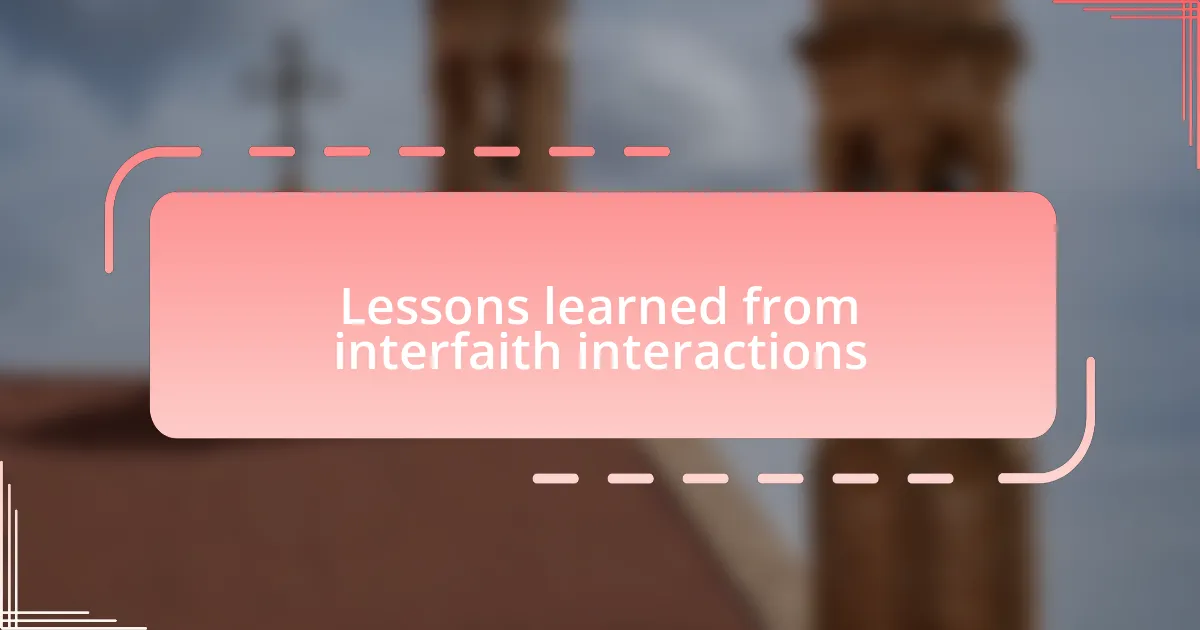
Lessons learned from interfaith interactions
Engaging with peers from different faiths taught me the value of listening. One afternoon, during a group discussion about religious practices, I was captivated by a friend’s description of their traditions. I found myself reflecting on how often we make assumptions without truly understanding another’s viewpoint. This experience reinforced that compassion begins with the willingness to hear others’ stories and appreciate the nuances of their beliefs.
Through interfaith dialogues, I discovered that curiosity can bridge seemingly vast divides. I remember a potluck event where each participant brought a dish representing their culture and faith. Sharing stories behind those dishes not only filled our stomachs but also nourished our spirits. In that moment, I realized that curiosity can spark friendships and foster respect, allowing us to celebrate our differences instead of fearing them.
Looking back, the most profound lesson I learned is that vulnerability paves the way for deep connections. I recall a sensitive conversation about faith with a classmate who struggled with their beliefs. By sharing my own experiences with doubt and uncertainty, I noticed the weight of their struggle lift just a little. It struck me that being open about our doubts can create safe spaces for others, teaching us that true understanding often comes from shared vulnerability. How often do we miss these connections by holding back our own truths?